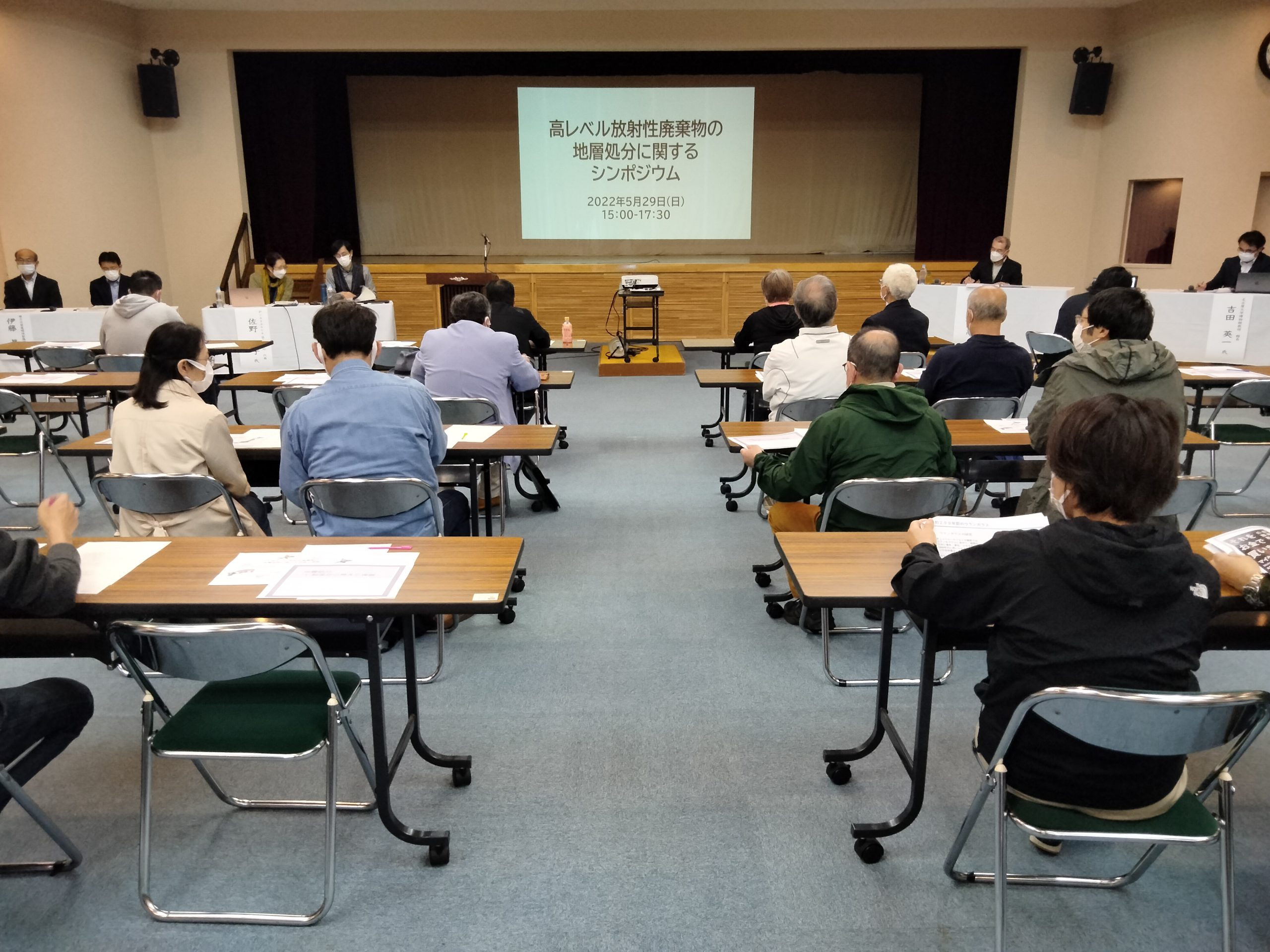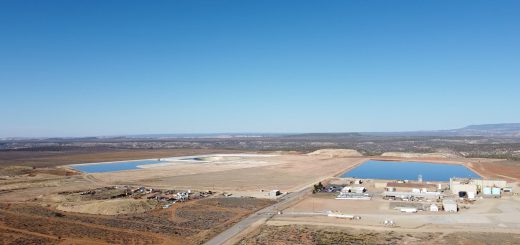A perusal of the recently released ‘Decommissioning Implementation Policies’ ~Decommissioning costs grossly underestimated at 15 trillion yen
By Nishio Baku, CNIC Co-Director
From 25 to 27 December 2018, Japan’s electric power companies, nuclear fuel cycle businesses and users of nuclear fuel materials posted on their websites their “decommissioning implementation policies” for the facilities they own. The preparation and publication of these policies had been prescribed by Article 57 Paragraph 4 of the revised Act on Regulation of Nuclear Source Material, Nuclear Fuel and Reactors (below, the “Reactor Regulation Act”) approved and promulgated in April 2017 at the suggestion of the International Atomic Energy Agency (IAEA) in April 2016. This Act went into force in October 2018, making publication of decommissioning implementation policies obligatory within three months of its enforcement, thus the posting of policies on websites at the end of last year.
Specifically, the following items are included:
・Facilities and sites expected to be subject to decommissioning
・Facilities to be dismantled and methods of dismantling them
・Management and conveyance of spent fuel and substances separated from nuclear fuel or spent fuel in connection with decommissioning
・Elimination of contamination by spent fuel or nuclear fuel in connection with decommissioning
・Prediction of the amounts of spent fuel and substances to be separated from nuclear fuel or spent fuel and items contaminated by any of those, and their disposal
・Management of radiation exposures accompanying decommissioning
・Types, degrees, impacts, etc. of accidents that could conceivably occur during decommissioning in the case of errors, malfunctioning machines or equipment, inundation, earthquakes, fires, etc.
・Facilities that will need to be maintained in working order during decommissioning and the period during which their capacity will need to be maintained
・Estimation of expenses necessary for decommissioning and methods of procuring the needed funding
・System for implementing decommissioning
・Plan for assuring quality in connection with decommissioning
・Decommissioning schedule
Costs of decommissioning Tokai Reprocessing Plant and Monju
Among the estimated costs of decommissioning that have been released, those for the 79 facilities of the Japan Atomic Energy Agency (JAEA) will total about 1.8 trillion yen according to a Kyodo News dispatch on December 26 which said, “The estimate does not include running costs, and it is feared the actual costs could increase greatly if the work is protracted.” On 9 February 2019, NHK reported a calculation of running costs that came to about 3.3 trillion yen. JAEA says, “Considering that the maintenance costs of all our facilities currently come to 40 billion yen annually, when we ran the calculations assuming a decreasing proportion of maintenance costs as the facilities are dismantled, they came to about 1.4 trillion yen over a 70-year period.” JAEA say they have provided a rough estimate to get an overall feeling of the scale of the budget needed, but when added to the 1.8 trillion yen given above, it comes to about three trillion yen.
Below I would like to narrow the focus from JAEA’s many facilities to the Tokai reprocessing plant and Monju prototype fast breeder reactor, and look at the estimated costs of their decommissioning in JAEA’s decommissioning implementation policies.
For the Tokai reprocessing plant, the costs will be about 140 billion yen to dismantle the facility, about 250 billion yen to process radioactive wastes and about 380 billion yen to dispose of themー a total of about 770 billion yen. On top of that, there are the following additional items: “Note that aside from the above costs, there will be a necessary outlay over the next ten years (of about 217 billion yen) as indicated in plans toward decommissioning the Tokai reprocessing plant (in a report dated Nov. 11, 2016). This includes the costs of safety measures based on the new regulatory standards and measures for aging management and vitrification operations, among others.”
In total the costs come to roughly one trillion yen. The period over which they are to be incurred, however, will be considerably longer than “the next ten years.” “Ultimately, to complete all of the decommissioning measures at about 30 facilities in the controlled area (up to termination of the controlled area), is expected to take about 70 years.” In view of the state of progress of decommissioning (assessed by the Nuclear Regulation Authority’s (NRA’s) Tokai reprocessing plant safety monitoring team), the period will probably have to be extended.
For the Monju fast breeder reactor, the costs will be about 15 billion yen to retrieve the spent fuel and prepare for decommissioning, about 87 billion yen to dismantle the facilities, about 24 billion yen to process radioactive wastes and about 24 billion yen to dispose of them, for a total of about 150 billion yen. There is no mention at all of costs beyond these.
When the decision to decommission Monju was made in December 2016, the Ministry of Education, Culture, Sports, Science, and Technology of Japan (MEXT) released an estimate that gave running costs of about 225 billion yen for the 30 years until dismantling could be completed, plus some additional costs of complying with the new regulatory standards, raising the above-mentioned total cost to about 375 billion yen. The Board of Audit of Japan compiled a report in May 2018 titled Regarding the Status of the Monju Fast Breeder Reactor’s R&D and Future Decommissioning, which had this to say:
“Neither the necessary personnel costs for employees nor property taxes are reflected in the above costs. In addition, it will be necessary to transfer Monju’s fuel to processing facilities and dispose of it properly, but concrete plans and methods for the conveyance, disposal, etc. are to be considered while the fuel is being retrieved. Thus, regarding the necessary costs, only those within the scope of what can be approximated at this time have been reflected. Moreover, regarding the necessary costs of processing and disposing of the sodium, the methods of treatment, etc. are to be considered during the course of decommissioning, so changes are possible as decommissioning proceeds.
“Regarding the necessary future costs of Monju’s decommissioning, this will be the first attempt in Japan to decommission a fast breeder reactor and changes may be made in the decommissioning process. If the time needed for decommissioning ends up being extended beyond the initial estimate of 30 years, the costs are expected to increase. Accordingly, for the JAEA to be accountable to the public, it will be important for it to clarify the state of implementation and necessary costs of decommissioning in a timely and appropriate manner as it proceeds with decommissioning.”
These indications apply to the Tokai reprocessing plant and many other facilities as well.
Untraversed Field of Waste Disposal
A Kyodo News dispatch of 30 December 2018 reported that if all 73 of the main commercial nuclear power related facilities, including nuclear power plants (NPPs) and nuclear fuel cycle facilities, were decommissioned, the costs would come to at least 12.8 trillion yen. This figure was released following the JAEA decommissioning implementation policies. It was said to be the total of the estimated costs of 4.8 trillion yen for 69 facilities released by 19 companies, plus 8 trillion yen estimated by the government for Units 1 to 4 of TEPCO’s Fukushima Daiichi NPP, which are not included in the former. An explanatory note was added, saying “Note that the number of years to complete decommissioning of most nuclear plants is expected to be about 30 to 40, but in these estimations, the costs of facility maintenance and measures against aging have not been included, so the costs are certain to rise further.” Together with the JAEA’s aforementioned 1.8 trillion yen, it comes to nearly 15 trillion yen, which is a gross underestimate. There are other national institutes aside from the JAEA, such as the National Institute of Radiological Science (NIRS) and the physics research institute RIKEN, but their costs are not so big.
Costs to decommission NPPs have been calculated annually in Japan as estimations of “reserve funds for dismantling of NPP facilities.” There is no big difference between the amount announced this time and the “reserve funds for dismantling” available for fiscal 2015, so it must be the most recent estimate. Only the costs for Fukushima Daiichi Units 1 to 4 have not been released in either the estimations of the reserve funds for dismantling or the decommissioning implementation policies. The government’s estimate of 8 trillion yen lacks any basis.
Neither the JAEA’s Ningyo-toge Environmental Engineering Center nor any of Japan Nuclear Fuel Ltd.’s uranium enrichment and nuclear fuel processing facilities have released costs in their decommissioning implementation policies. The Ningyo-toge Environmental Engineering Center only lists costs to dismantle the facilities, leaving the waste disposal cost column blank. Those of the other facilities just say, “The outlays necessary for decommissioning cannot be estimated in a reasonable manner.” This is because no system for disposing of uranium waste has been devised, so they are “unable to select contaminant removal or waste disposal methods, and the preconditions for estimating costs have yet to be decided.”
More than 60 years have passed since Japan began developing nuclear energy. It should come as a surprise that even now no system for disposing of radioactive wastes has been created, but this is the result of promoting last-minute measures in pursuit of ways to handle the problem or else just giving up. Furthermore, even if a system for disposal is tentatively created, in reality this is mostly an untrodden field.
Even looking only at NPPs (excluding Fukushima Daiichi Units 1 to 4) and assuming it possible to carry away the approximately 56,000 tons considered relatively low level radioactive waste (L2) to the Rokkasho waste landfill, disposal destinations for about 6,000 tons considered relatively high-level (L1) and about 970,000 tons considered extremely low-level (L3), have yet to be determined. About 1 million tons, considered to be “waste not needing to be treated as radioactive substances,” which is at or below the clearance level, and “waste that is not radioactive waste,” which is approximately 10 times more abundant (and depending on the facility, the amount may not even be listed), is deemed as suitable for recycling, but at present there are no plans for that.
There is also a notice to the effect that incidental wastes are not included in the estimated amounts. Moreover, the amount of wastes held at the time of decommissioning are not included.
Regarding L1 wastes, Japan’s Nuclear Regulation Authority (NRA) has established a “team to consider regulations for radioactive wastes accompanying reactor decommissioning, etc.” and is preparing regulatory standards for burial of wastes at depths of 70 meters or more and managing them for about 100,000 years into the future. Regarding L3 wastes, on July 16, 2015, Japan Atomic Power Co., which is working on the decommissioning of the Tokai NPP, applied to the NRA for approval of an on-site landfill at the NPP, disposing of it in trenches. It is a low-cost disposal method in which metallic wastes are placed into steel boxes, concrete blocks are wrapped in plastic sheeting and concrete debris is put into flexible container bags which are buried in trenches about four meters deep and covered with about 2.5 meters of soil. It is obvious that other companies will want to dispose of their wastes in a similar fashion, but Fukui Prefecture among others is strongly demanding that any waste be taken out of the prefecture, so it is not so simple. Temporary storage is thus expected to continue, with neither on-site disposal nor transporting it away being possible.
Even regarding wastes approved for clearance, in a July 15, 2018 article, Shizuoka Shimbun reported that while a petition was filed with the NRA in October 2017 for approval of methods for measuring and evaluating some of the metallic materials from Units 1 and 2 of the Hamaoka NPP, which are undergoing decommissioning, the plan for most of them is to expand the site further and store them temporarily outside.
The actual track record of recycling is limited to things like benches made from scrap metal generated by the Tokai NPP being used at a nuclear power PR hall. A report titled Regarding Recycling of Demolition Waste from Nuclear Power Facilities and RI Equipment, compiled in November 2018 by the Institute of Applied Energy’s Decommissioning Study Group, proposed that “restrictions on recycling should be rescinded without delay” because “as things stand, based on replies to Diet deliberations at the time the law was revised, recycling is limited to businesses that are aware that the materials come from nuclear power facilities.”
As a precondition for that, nuclear power-related businesses are calling for reassessment of the methods of measuring and evaluating the concentrations of radioactive substances. In talks with the Federation of Electric Power Companies and other organizations on August 30, 2018, the NRA indicated a course toward revision of clearance laws and bylaws, and those talks have continued since then. The NRA also held a meeting with businesses to exchange views on October 11. In a meeting of the NRA on January 9, 2019, Chairman Toyoshi Fuketa mentioned revision as one of the most important tasks for 2019, so it looks like the reassessment will be railroaded through this year. It will be necessary to speak up once more against revision of clearance levels.
Even with that revision, almost none of the approximately one million tons of materials approved for clearance would be recyclable. There would be nothing to do but store them for the time being. In all likelihood, they will stay sitting around at NPP sites, with L3 playing a leading role. Even for “waste that is not radioactive waste” it is difficult to conceive of it being readily accepted even in the face of stubborn insistence that it is not radioactive and that it must be recycled or accepted for disposal. There is too much of it for anyone to accept anyway.
It is estimated to take about 30 to 40 years to complete the decommissioning of any of Japan’s nuclear reactors, but this is unlikely to proceed smoothly and the costs are expected to keep on increasing.
As for nuclear fuel cycle facilities, not even the Rokkasho waste landfill can be called on to accept L2 waste, so there is no clear destination for any of the waste being generated or stored. Decommissioning takes a long time, and the costs are guaranteed to increase further.



